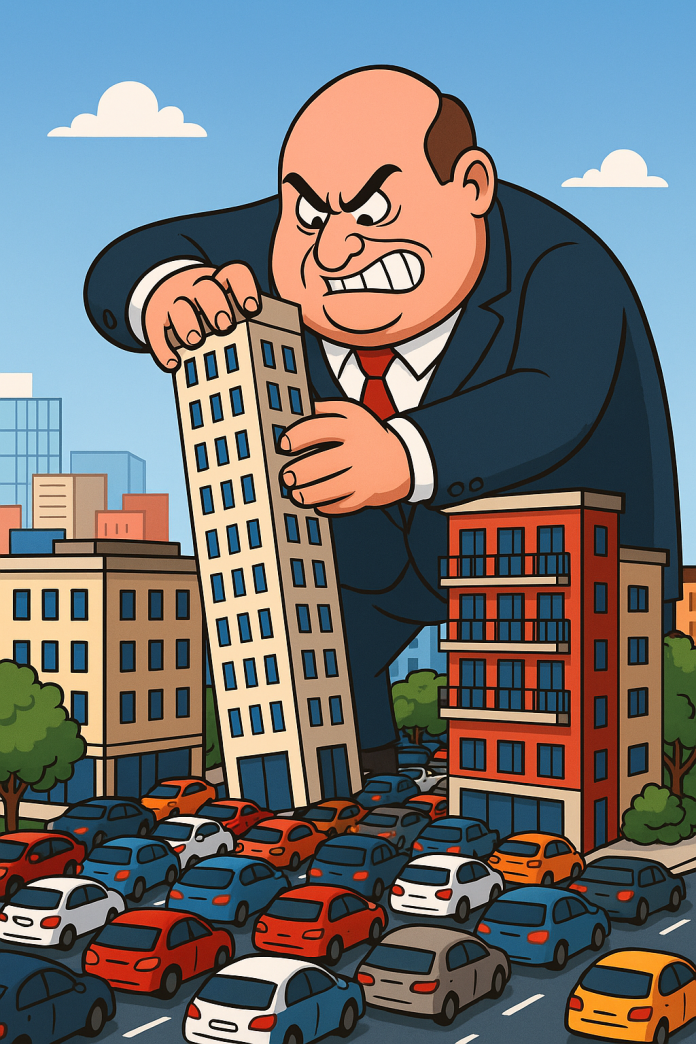Ten years ago BocaWatch Publisher Al Zucaro wrote this article about the development of Boca Raton’s Downtown area.
In it he discussed Boca’s changing aesthetics and density.
Since then a lot has been built in Boca’s Downtown. What’s happened since?
The article paints a picture of frustration in 2015:
- IDG vs. Ordinance 4035
Ordinance 4035 was the long-standing baseline for downtown building standards. The Interim Design Guidelines (IDG) were meant to last six months before being replaced by the Pattern Book — but had instead been in place for six years. - Projects under fire:
- The Mark and Via Mizner were held up as examples of “ill-conceived” design — criticized for height, massing, window treatments, and poor streetscape integration.
- The IDG was seen as developer-friendly, especially with its reduced minimum lot size (2.0 acres → 1.2 acres) and its implied “entitlement” for taller buildings.
- Resident vs. Developer visions
- Residents largely wanted to stick with Ordinance 4035, emphasizing scale, character, and aesthetics.
- Developers sought additional height and looser design restrictions for profitability.
- Proposed solution:
Six-month moratorium, citizen task force, completion of the Pattern Book, and elimination of the IDG.
How Development Has Actually Proceeded Since
A. Height and Density Increases Have Continued
- Despite calls in 2015 to return to 4035’s scale, several major downtown projects have moved forward with heights above what 4035 originally envisioned — aided by IDG-influenced standards or later design rules.
- Examples:
- Alina Residences (Phases 1 & 2) — luxury condos along Mizner Blvd., with contemporary styling, large footprints, and significant height.
- Mandarin Oriental / Via Mizner — completed in multiple phases, taller and denser than 4035-era developments. This ambitious development has not met expectations.
B. Divergence in Architectural Spirit
- The Pattern Book ideals — articulated façades, pedestrian-friendly streetscapes, Mizner-inspired design — have been inconsistently applied.
- Some projects (200 East, updated Royal Palm Place phases) show strong alignment with 4035 aesthetics. Others (Tower 155, parts of Via Mizner) lean toward modern, high-density massing that residents in 2015 feared.
C. No True Six-Month Reset
- There was no blanket moratorium or “zoning in progress” freeze. Development continued under evolving hybrid guidelines.
- The Pattern Book as a “living document” still never reached the consensus-based finish Zucaro envisioned.
D. Downtown Expansion and Mixed-Use Intensification
- Since 2015, Boca has seen a push toward large mixed-use, live/work/play developments — aligning more with developer priorities in the “tale of two cities” Zucaro described.
- Midtown Boca and BRiC redevelopment further shifted the city’s growth model toward economic and employment hubs, often outside the 4035 CRA framework but influencing downtown market pressures.
Concerns 10 Years Ago vs. Today
| Aspect | 2015 Article Concern | Post-2015 Reality |
|---|---|---|
| Height | Opposition to additional height beyond 4035; seen as developer-driven | Multiple new projects exceed traditional 4035 massing, often using post-IDG flexibility |
| Design Quality | Poor execution on The Mark, Via Mizner; wanted more 200 East-style outcomes | Mixed results — some projects uphold Mizner style, others push contemporary bulk |
| Pattern Book Completion | Urged six-month moratorium to finish and adopt it | Never fully resolved in the consensus-based way proposed; guidelines evolved piecemeal |
| Resident Input | Limited, short speaking slots at public meetings; called for citizen task force | Public hearings continue, but no formal joint-task-force resolution of developer vs. resident visions |
| Lot Size Rules | Concern over reduced lot minimum (2.0 → 1.2 acres) facilitating big projects | That change remains; enabled denser/taller site redevelopments in the downtown core |
Bottom Line
Development since 2015 has leaned more toward the developer vision described in Zucaro’s “tale of two cities” — with continued height increases, mixed adherence to Mizner-inspired design, and no formalized completion of the Pattern Book under the collaborative framework residents pushed for.
Some property holders have respected the spirit of Ordinance 4035 (Brookfield’s Mizner Park, 200 East, portions of Royal Palm Place), but the overall trend has been toward denser, taller, more contemporary forms that would have been harder to approve under a strict, unamended 4035 regime.











